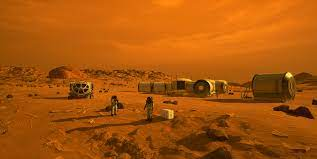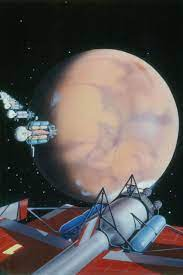A human mission on Mars should take no more than four years.
- Sri Sairam Gautam B
- Sep 6, 2021
- 4 min read
There was a time when the idea of sending humans to Mars seemed to be a distant perspective or something of science fiction. But with multiple space agencies and even commercial space companies planning to mount missions in the coming decade, the day when humans will go to Mars is fast approaching the point of realization. Before that can happen, several problems have to be solved first, including a myriad of technical and human factors.
In any discussion of manned missions on Mars, there are recurrent questions as to whether or not we can mitigate the radiation threat. In a new study, an international team of space scientists addressed the question of whether particle radiation would be too great a threat and if radiation could be mitigating through careful timing. Ultimately, they found that a mission to Mars was feasible but could not be longer than four years.

The research was conducted by Mikhail Dobynde, a research fellow at the Skolkovo Institute of Science and Technology and the Russian Academy of Sciences in Moscow. He was joined by members from the GFZ German Research Centre for Geosciences at the Helmholtz Centre Potsdam in Germany, the University of California Los Angeles (UCLA), and the Massachusetts Institute of Technology (MIT).
For their study, the team looked at the threat posed by the two major types of radiation sources: Solar Energy Particles (SEP) and Galactic Cosmic Rays (GCR). The first consists of rapidly moving protons, electrons, and high-energy atomic nuclei that can adversely affect electronics and living tissues. The latter is composed of the same range of energetic particles, but originate beyond the solar system and are ascribed to supernovas.

The intensity of both of these radiation sources depends on the level of solar activity, where SEP levels are least intense during a solar minimum, but GCR activity is most enhanced. The opposite is also true, where the RCG activity will be the lowest during the solar maximum, but the MS will be high. To assess the threat posed by these sources, the team used a combination of geophysical models which examined how particle radiation varies over the 11-year solar cycle.
They have been combined with models of how radiation will affect human passengers (including individual body organs) and their spacecraft. The team then conducted a series of Monte-Carlo radiation propagation simulations by considering 10 different types of MS radiation and 28 types of fully ionized GCR elements. From here, they determined that the best time to send a mission to Mars would be for six to twelve months after the peaks in solar activity (aka. solar maximum).
At this stage, PNR activity is at its lowest, and SEP is beginning to decline relative to its highest intensity. The situation turns around slowly over the next six and a half years, with RCM activity slowly increasing until it reaches its maximum intensity (coinciding with a solar minimum). Given that the average flying time to Mars is approximately nine months, a crewed return mission to Mars could be completed in less than two years.

According to their findings, Dobynde and his colleagues found that this would ensure that the mission would go home before the radiation environment became too dangerous. But a mission that lasted up to four years would push it because they would be forced to return home in the middle of the higher levels of GCR activity. Therefore, their modeling also indicated that the shielding of the spacecraft would have to be relatively thick to maintain the health of the crew.
However, these same findings also indicate that having too much armor could actually increase the amount of secondary radiation to which the crew is exposed. This phenomenon, in which high-energy particles collide with the armor to produce a cascade of secondary particles (aka. a "particle shower"), has undergone extensive studies onboard the International Space Station (ISS).
According to Yuri Shprits, the head of space physics and space weather at GFZ Research Centre for Geosciences (and a co-author on the paper), these results could be of great value to future mission planners. “This study shows that while space radiation imposes strict limitations on how heavy the spacecraft can be and the time of launch, and it presents technological difficulties for human missions to Mars, such a mission is viable,” he said.
These considerations are essential as there are numerous plans to conduct regular missions to Mars shortly. This includes NASA and its Moon to Mars mission architecture, China’s plans to send crews to Mars by 2033 (and build a permanent research outpost there), and Elon Musk’s plan for sending payloads and crew every two years using the SpaceX Starship and Super Heavy launch vehicle.
These are but a few of the visions of Martian exploration (and colonization) that have been articulated in recent times. With all the robotic missions that are currently exploring the planet and the possibility of human exploration on the horizon, Mars has once again caught the public's imagination. Since the Apollo era, Mars is now regarded as the "next great leap forward" that could lead to a new era invigorated by the space era!

The fact that Mars is the most habitable heavenly body beyond Earth has also been a source of inspiration for scientists, mission planners, astronauts, and futurists. Despite the challenges this would bring, there is currently no shortage of people willing to sign up for a one-way ticket. For these adventurous souls, the prospect of breaking into Mars – the next great "frontier" – is romantic in its own right.
But what is particularly exciting is when realistic evaluations show that these adventurous notions are indeed achievable, given good preparations, technology, and mitigation strategies. When scientific facts and romanticism come together to plan for the future, great things can take place!




Comments